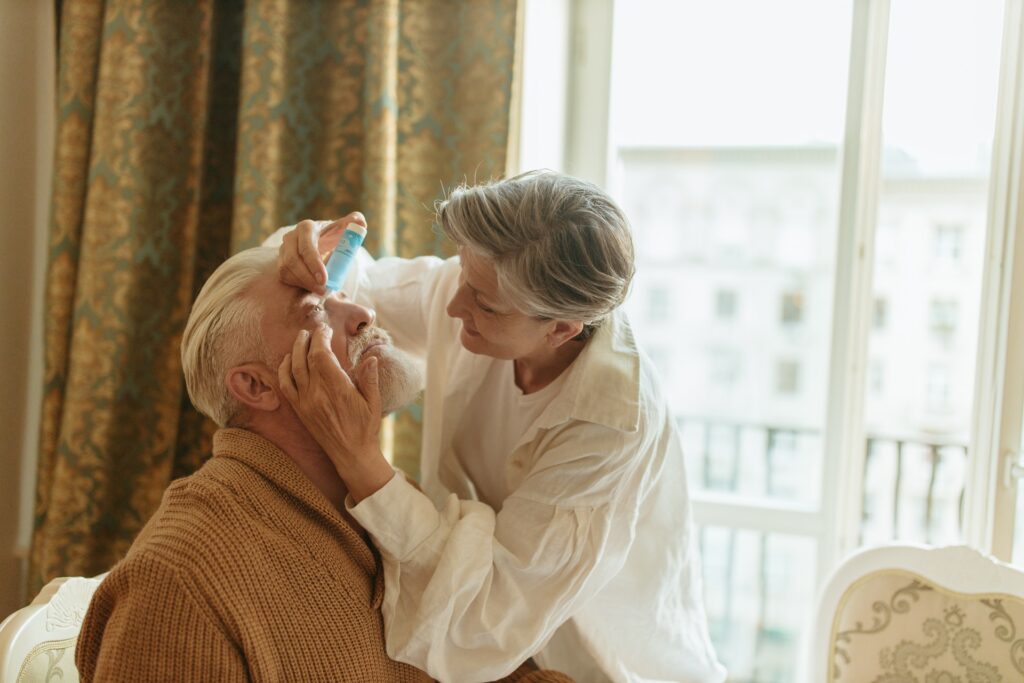
A fungal eye infection is a serious problem that requires care from a healthcare provider. Treatment usually includes antifungal eye drops like fluconazole and voriconazole, as well as injections.
In more severe cases, surgery may come up as a solution to remove the infected eye or to remove the vitreous gel. These are the most common types of treatments for fungal eye infections. Read on to learn more about these options.
What are the main causes for fungal eye infections?
Before we look at the causes of fungal eye infection, let’s look at ways that the infection can occur. One of the common ways to get a fungal eye infection is due to an eye injury, in particular if the injury is from a plant material such as a stick or a thorn.
Some fungi can also be the cause of the eye infections, fungi such as Fusarium, live in the environment and often from plant material.
If a fungal eye infection is on the back burner, it can lead to more severe conditions. That is to say, in some cases, patients may need surgery. In other cases, the eye may need to be removed or the vitreous gel removed from within it.
Well, in these cases, the eye may be surgically removed. If the condition is not treated, it can lead to permanent damage. This is why it’s important to treat it as soon as possible.
Treatments for fungal eye infection
Fortunately, there are several treatments for fungal eye infection. The first step is to visit an eye doctor who can perform a thorough exam and diagnose the condition. After the exam, a small sample of fluid or tissue will be sent to a lab for culture.
The results of the culture can determine whether the infection is caused by a fungus. Once the diagnosis has been made, the proper treatment can begin. The sooner a patient seeks treatment, the better.
Surgical treatment is necessary if a fungal eye infection is not treated. If left untreated, it can result in permanent vision loss. If a patient is unresponsive to treatment, he or she may need to undergo corneal transplantation or remove the eye’s vitreous gel.
The most common form of surgery for fungal eye infection is a corneal flap or acorn. In some instance, the removal of the eye is usually the only option for treatment.
Fungal eye infection home remedy
How do you treat fungal eye infection at home? The most effective treatment for fungal eye infection involves the use of an antifungal eye drop. The antifungal eye drops will fight the fungus in the eye. They contain materials that can kill the fungus.
These products are there to treat infections of the skin and the cornea. A patient should be aware of the risks with fungal eye infections. This report does not cover all the options available in treating fungal eyes.
Although most fungal eye infections are harmless and do not require any treatment, they will not get better without it. In many cases, a fungal eye infection will clear up on its own, but in severe cases, it may need multiple treatments.
In some cases, the infection will be too advanced to be treated with eye drops, but in most cases, treatment is simple and easy. There are several ways to treat a fungal eye infection.

Fungal eye infection symptoms
Pain in the eye
Blurred vision
Eye redness
Excessive tearing of the eye
Sensitivity to light
Eye producing discharge
A doctor may prescribe an antifungal medication. A fungal eye infection will not get better without treatment, so it’s important to follow the directions of your doctor. Your caretaker will prescribe a daily antifungal eye drop.
The best way to get the right dosage is to talk to your doctor and have a comprehensive eye examination. A doctor can also prescribe an oral medication. A prescription for the drug is the best option. You should not hesitate to consult your doctor.
Can a fungal eye infection go away without treatment?
A fungal eye infection will not go away without treatment. Antifungal medication will help your eyes heal, but you should be aware that the medication may take weeks to months. Your doctor will prescribe you an appropriate medication based on your health and the type of fungus affecting you.
It will be important to follow the instructions for the treatment. You should not skip any treatments, however, if you have an infection that requires a prescription.
The best way to treat a fungal eye infection is to consult an eye doctor as soon as possible. The treatment will depend on how advanced your infection is. If the infection doesn’t look good, a doctor can prescribe medication. Medications for fungal infections will help you to get better. You should see a doctor as soon as possible if you have symptoms. A physician can prescribe an antifungal medicine that will cure your fungal eye infection.
If you liked the article, please donate!
